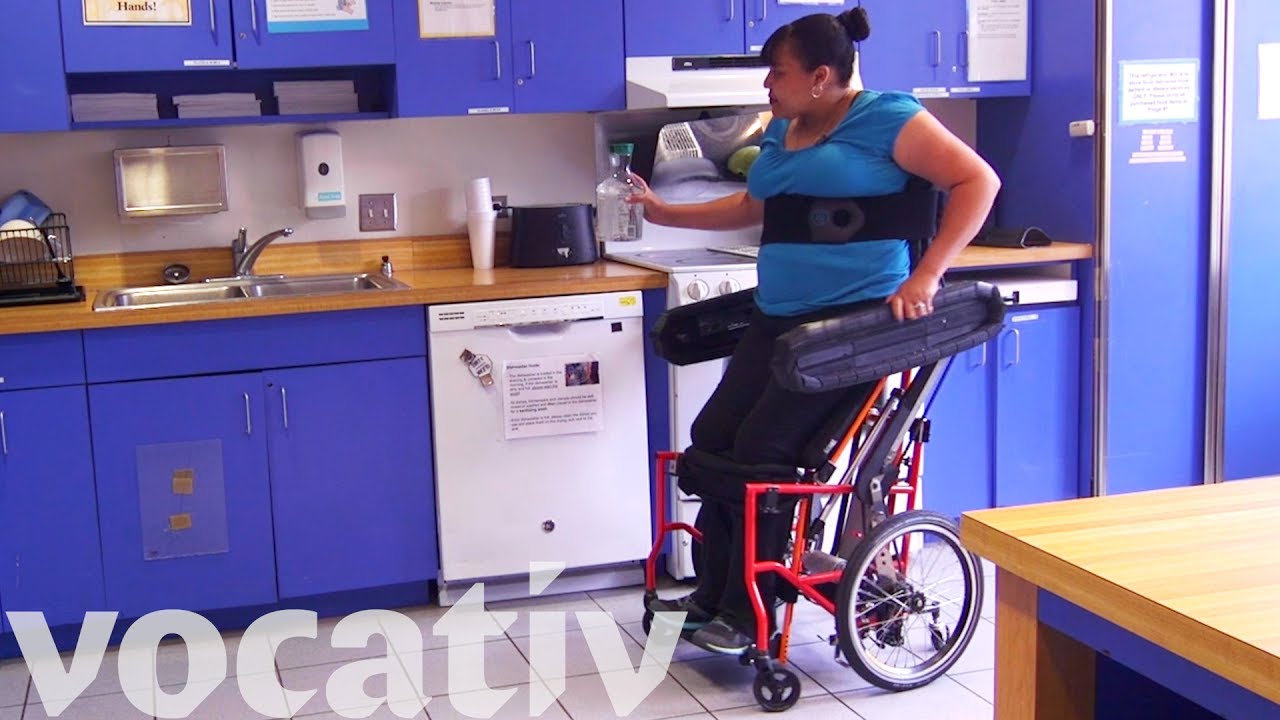What is the big STEM idea you want to share with us?
A wheel chair that let’s users stand.
This one has a belt to enable propulsion even when the user stands.
Evidence for medical benefits.
https://www.resna.org/sites/default/files/legacy/resources/position-papers/RESNAPositionontheApplicationofWheelchairStanding.pdf
Some design ideas for wheelchairs.
Nearly all mobile support for persons who have a range of difficulty in walking involve sitting down. This naturally lowers the centre of gravity, and makes it simpler to design a stable platform for the user.
However, when the greatest number of persons are walking upright, and standing upright while conversing or otherwise engaged in public, this puts the wheelchair user at a big disadvantage.
In these posts, alerted by @damitr and followed up by @jtd, two wheelchair designs are described, both in development, where the seated user has a mechanism that allows the posture to move from sitting to standing, without the use of the legs (it is presumed that the legs might be completely dysfunctional).
One wheelchair has relatively small wheels, with two large wheels within reach of the hands. A lever is moved, then the driver wheels power a mechanism that lifts the user to a supported upright position. Reddit - Dive into anything The position of the user is carefully calibrated so that the centre of gravity remains well within the wheeled base support, and the hand operated wheels now return to driving the base wheels.
In the second design, seen here, This Wheelchair Lets Users Stand - YouTube, the drive is provided by armrests that are actually tracked belts. The adjustment to stand up is very similar, and in the standing position, the armrests once again revert to driving the base wheels.
It is not clear whether either of these designs has actually entered production. However, it should be noted that the availability of wheelchairs in India is a very different proposition from that of many other countries, where either insurance per social welfare pays for sophisticated and often expensive accessibility hardware and software. This link, http://Researchgate.net, also has references to other such helpful designs.
It appears to me that there is great scope for rethinking the wheelchair in India. There are both social and healthcare related advantages to a mobile platform that allows a user who does not have the ability to walk without assistance, or not at all, to be able to move upright. For instance, in many cities, sidewalks or pavements are actually unavailable for wheelchair users, due to rampant abuse by two wheeler drivers, forcing municipalities to erect pillars to block them for anyone not walking on their own legs. Even when they are available, they are often not in a fit condition, compared to the nearby road, for safe use by wheelchairs. In such circumstances, the wheelchair user must use the road itself, which is highly dangerous since the user is almost out of sight from faster moving drivers in cars.
Secondly, persons with disabilities are treated very poorly in social environments. Much of the discrimination arises from the inability to converse eye to eye.
Thirdly, it is not conducive to good health to be sitting for long periods of time. The body is designed to take advantage of a vertical posture, for the smooth transport of internal body fluids for sustenance of nearly all the organs, and also for the unstressed placement of the organs themselves, especially in the torso.
Maker labs need to get involved with rethinking this very basic tool, needed by large numbers of people, some temporarily and some permanently affected by loss of use of the lower limbs.
Is it possible to make a exoskeleton that could use the same kind of tech that is used to make operational prosthetics for people who have a missing limb. If done one doesn’t need a wheel chair instead they can operate there whole body by ease and the way they want. It can provide more than just a upright support.
There are several exoskeletons in production, ranging from the Boston Dynamics military kit, with a heavy duty lifting capacity to allow a soldier to carry and use heavy weapons, to the Cyberdyne wearable for paraplegics. However, the cyber controls are really expensive, and there does not seem to be any efficient way at the moment to bring this down. Without this, the exoskeleton cannot safely keep the body upright.
The two wheelchair designs don’t have any automation, and this shrinks the cost. The safety is provided by having a wide base and wheels sufficiently far apart to ensure the body is always within the region of stability. However, it appears the costs are still much higher than would be considered affordable in India.
